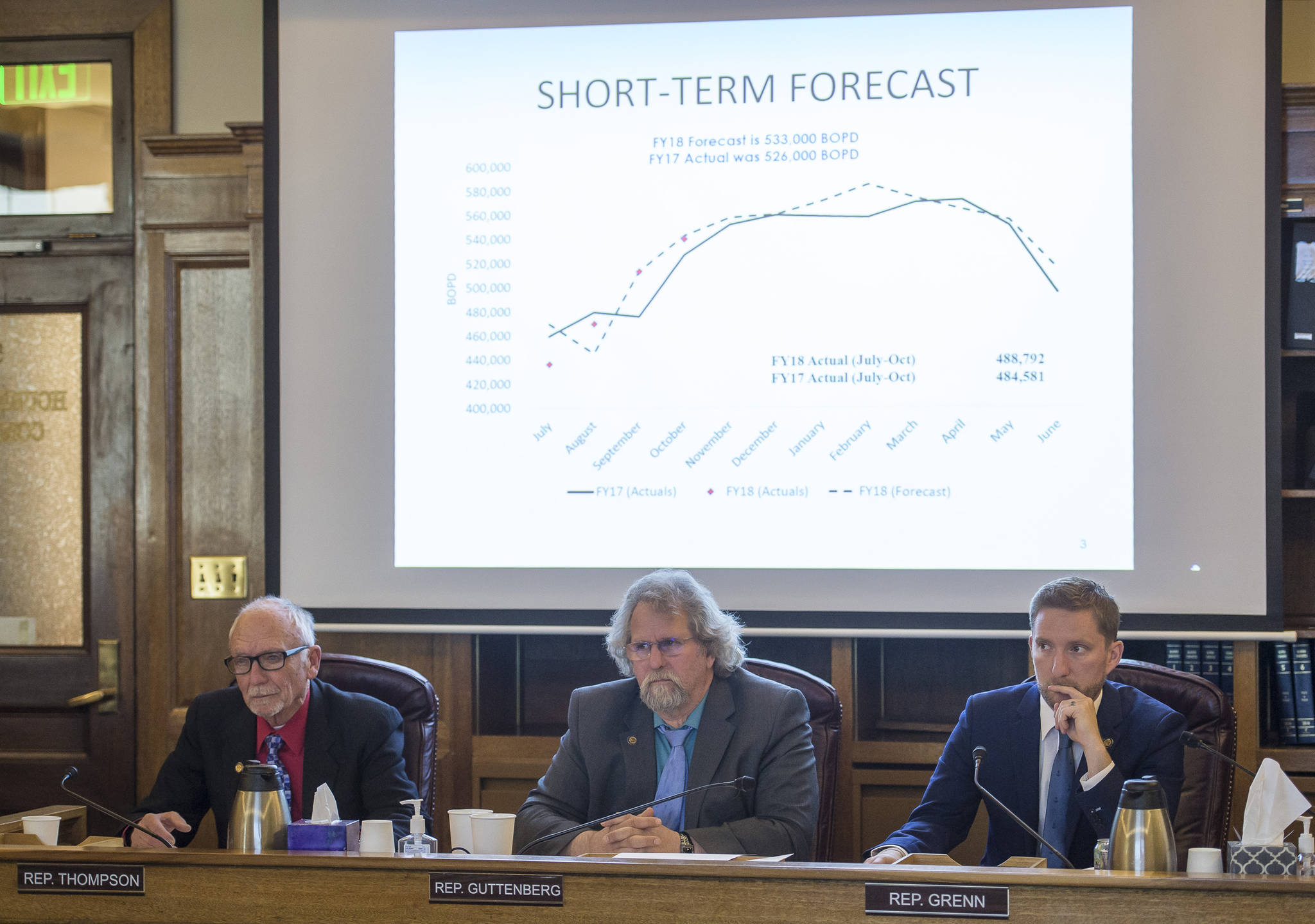Unless legislators act, the state of Alaska will run out of money sometime in late 2018 or early 2019.
In a pair of presentations Tuesday and Wednesday, members of the Alaska House Finance Committee were told that the state’s Constitutional Budget Reserve does not have enough money to cover the state deficit in the next fiscal year.
That leaves lawmakers with a politically impossible choice when they convene for their regular session in January 2018: Pass steep new taxes, spend from the unprotected portion of the Alaska Permanent Fund, or embark on staggering cuts to the state budget.
“You either have to make two and a half billion-dollar budget cuts, or you have to use the (Permanent Fund) earnings reserve,” said Legislative Finance Division Director David Teal, outlining legislators’ options once the budget reserve is empty.
That grim news comes despite an improved forecast for oil production from the North Slope.
On Wednesday, Revenue Commissioner Sheldon Fisher told lawmakers that oil production in fiscal year 2017 rose from the previous year. It’s the second consecutive year of increase after years of declines.
Those increases follow the passage of a revised oil tax system known as Senate Bill 21, but it isn’t clear whether the increase can be linked to the bill. The increase also comes after oil companies slashed capital expenses by 44 percent between 2015 and 2016.
“They actually outperformed their own expectations,” said Ed King, special assistant to the Alaska Department of Natural Resources.
With better figures in hand, the state revised its production forecast for 2018 and 2019 upward; the state now expects the production increase to continue into FY18 before flattening and decreasing.
While that’s good news for the deficit — 70 percent of Alaska’s government revenue comes from oil — the good news was tempered by a lower forecast for oil prices. In addition, the state will spend more than expected to pay already-owed tax credits for the oil and gas industry, and it miscalculated the amount of property tax paid by the industry.
As a result, the new forecast doesn’t bring good news for the deficit: The projected deficit in fiscal year 2019, which starts July 1 next year, is higher today than it was before this week’s legislative update.
“Although you’ve gained in production, you’ve lost in price,” Teal told the Empire after the Department of Revenue presentation.
On Monday, Teal had told lawmakers that he anticipated a state deficit of just under $2.5 billion in FY 19. After the Department of Revenue presented its updated forecast, he said the deficit will be closer to $2.8 billion.
“You’ll now have a bigger deficit than you used to,” he said.
At the Department of Revenue presentation, Rep. Les Gara, D-Anchorage, had a half-statement, half-question for Fisher.
“Unless I’m missing something, the money coming in FY 18 and FY 19 doesn’t obviate the need for a fiscal plan,” he said.
“We agree with that 100 percent,” Fisher said.
• Contact reporter James Brooks at james.k.brooks@juneauempire.com or call 523-2258.

